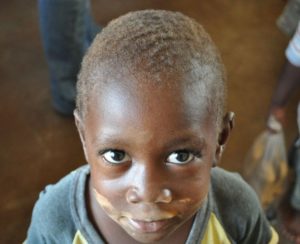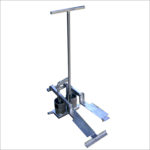Maji

Research
Sept. 30, 2013 – We are currently researching the amount of access in Bondo to some of our needed supplies. Our prototype involves using sand and activated carbon for filtration and hydrogen peroxide for purification. We need more information about where (in or near Bondo) these supplies might be available. We need to know what type and size of sand is present in the area, and whether there are any stores that carry activated carbon and peroxide (or if the hospital in the town could supply small amounts of hydrogen peroxide to the school). If anyone has been to Kenya and knows the answers to any of these questions, feel free to email me at [email protected]. Thank you.
Prototyping
April 8, 2013 – We are now officially in the prototyping stage! We tested a simple filtration system on Tuesday using empty two-liter bottles, sand, activated carbon, and lake water. Our results were encouraging. We found that our water was cleaner after filtration and figured out some helpful tricks that will help us further refine the process when we develop an actual working prototype. We found that the sand needs to be thoroughly washed several times as to remove any contaminants that might be present in it and that the layers of the filtration process should be separated by a thin mesh so they do not mix together, preventing them from accomplishing their separate tasks as well.
Hello visitors!
Jan. 30, 2013 – We’re Project Maji. We are an EPICS (Engineering Projects in Community Service) team currently trying to design a system that can efficiently transport and purify water for a school for the deaf in Kenya. Thanks for visiting!
~Team Maji
About Maji
Project Maji aims to provide an efficient method for obtaining clean water to a school for the deaf in Bondo, Kenya. Currently, children and the staff at the school spend much of their time traveling to and from Lake Victoria, located approximately 10 miles from the school, in a single school bus, to fill five-gallon buckets with water and bring them back. This method takes a lot of time that could be used for studying at the school. The water brought back from the lake also needs to be filtered as it contains biological waste and microorganisms. Some of the water brought back to the school currently (mostly the water used directly for drinking, not the water used for cooking and washing) is treated chemically, but this process can be expensive and time-intensive, and is often only effective for very small amounts of water.
Our team’s goal is to create a system that can that can be used to store, transport, and purify a large amount of water quickly. This more efficient system would mean that a larger amount of water could be transported and purified using less man-hours, allowing students to have much more time to learn. If enough water can be transported, it can also be shared with the orphanage next to the school.
Our plan
Treadle Pump
 The first step of our task is to find an effective way to transport the water from Lake Victoria to our destination. In order to this, we plan to purchase a trailer to hook to the back of the school bus that the school already has available, and a 55 to 100 gallon drum to place on the back of the trailer. We will also need to purchase a treadle pump, a foot-powered pump (image to the left) that can siphon water from the lake and raise it several feet to the trailer. This pump will allow large amounts of water to be collected quickly, and keep the trailer from having to enter the lake, protecting both the bus and the trailer from degradation.
The first step of our task is to find an effective way to transport the water from Lake Victoria to our destination. In order to this, we plan to purchase a trailer to hook to the back of the school bus that the school already has available, and a 55 to 100 gallon drum to place on the back of the trailer. We will also need to purchase a treadle pump, a foot-powered pump (image to the left) that can siphon water from the lake and raise it several feet to the trailer. This pump will allow large amounts of water to be collected quickly, and keep the trailer from having to enter the lake, protecting both the bus and the trailer from degradation.
NExample of a Layered Water Filtration Systemext, we need to begin to purify the water. This purification process can begin even during the drive back to the school. We plan to put a layered filtration system in the top portion of the drum. This filtration system, along with the movement of the bus that will help pull the water through the layers, will slowly clean the water of contaminants. The first layer, more than likely gravel, will clear the water of large debris, such as plants and stones. The next layers, which will contain pores of decreasing sizes, will continue to clear out smaller and smaller contaminants.
 Once the water has reached the school, it will be removed from the smaller drum and placed in a large tank (possibly 1000 gallons). A solar-powered system beside this tank will be used to create hydrogen peroxide (H2O2) and activated carbon that can be used to further purify the water at different times before use. These final steps will remove the majority of the bacteria and biological molecules from the water, rendering it safe to drink.
Once the water has reached the school, it will be removed from the smaller drum and placed in a large tank (possibly 1000 gallons). A solar-powered system beside this tank will be used to create hydrogen peroxide (H2O2) and activated carbon that can be used to further purify the water at different times before use. These final steps will remove the majority of the bacteria and biological molecules from the water, rendering it safe to drink.